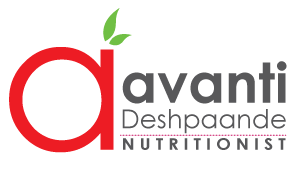In a bold and much-needed move to combat the rising tide of non-communicable diseases, the Indian Council of Medical Research, Government of India has introduced a nation-wide campaign called the “Oil & Sugar Boards” initiative. This innovative public health strategy is now making its way into schools, offices, hospitals, railway stations, and even airports. The aim? To visually alert citizens about the hidden dangers of excess sugar and fat in everyday foods—and prompt them to make healthier choices.
Let’s take a closer look at this unique initiative and what it means for our collective health.
Why This Initiative?
India is witnessing a silent epidemic. With more than 100 million people living with diabetes and millions more overweight or obese, lifestyle diseases have become the new normal. Unhealthy eating patterns—particularly high consumption of processed, high-fat, and sugary foods—are the major culprits.
According to a recent Lancet study, India could have nearly 449 million overweight or obese citizens by 2050 if dietary and lifestyle habits do not change. This is where awareness becomes crucial—and that’s exactly what the Sugar & Fat Boards aim to address.
What Are “Sugar & Fat Boards”?
These are prominently displayed nutritional awareness posters that break down how much sugar, fat, and oil is hidden in common snacks and street foods like:
- Samosas
- Jalebis
- Burgers
- Fried snacks
- Sugary beverages
Each board also includes a comparison against the recommended daily intake:
- For adults – 25–30 g sugar, 27–30 g visible fat
- For children – Only 20 g sugar
These visual tools help people realize just how easy it is to overshoot their daily limits by consuming just one or two servings of such foods.
Where Are These Boards Displayed?
The rollout began with CBSE schools, reaching over 24,000 institutions. It is now expanding into:
- Government offices
- Hospitals
- Public transport hubs and railway stations
- Workplaces and public buildings across state
In cities like Mumbai and Chandigarh, even local schools have been instructed to install these boards and ban High Fat, Sugar, Salt (HFSS) foods from their canteens.
As a nutritionist, I welcome this move. However, experts also caution that this step, while commendable, must be followed by stronger policies, including:
- Front-of-pack warning labels
- Restricting advertising of HFSS foods to children
- Imposing health taxes on sugary drinks and ultra-processed foods
- Strict school nutrition guidelines
The Bigger Vision:
Interacting with my clients often tells me that these options are easily available, cheap and yummy to satisfy cravings, but when people see the harmful impact of everyday foods in bold, simple terms, it becomes easier to say “no” and look for healthier alternatives.
The boards also encourage canteens and food vendors to provide options like:
- Millet-based snacks
- Seasonal fruits
- Sattu, chikkis, roasted chana
- Infused water and lemon drinks instead of sugary colas
Final Thoughts:
This initiative signals a paradigm shift—where health is being woven into the daily fabric of Indian life, not just confined to hospitals or doctor’s clinics. It shows that nutrition education doesn’t always need a classroom—sometimes, all it takes is a smart signboard in the right place.
But awareness alone isn’t enough. For long-term impact, India must combine such campaigns with regulatory reform, better food labeling, and access to affordable, healthy options.
As citizens, let’s take this opportunity to read, rethink, and reform our food choices—for our own health and the generations to come.
Have You Spotted a Sugar or Fat Board?
Next time you walk into a school, office, or railway station, look out for these boards. Take a moment to read. And maybe the next time you reach for that samosa or soda, you’ll pause—and pick a healthier option.




